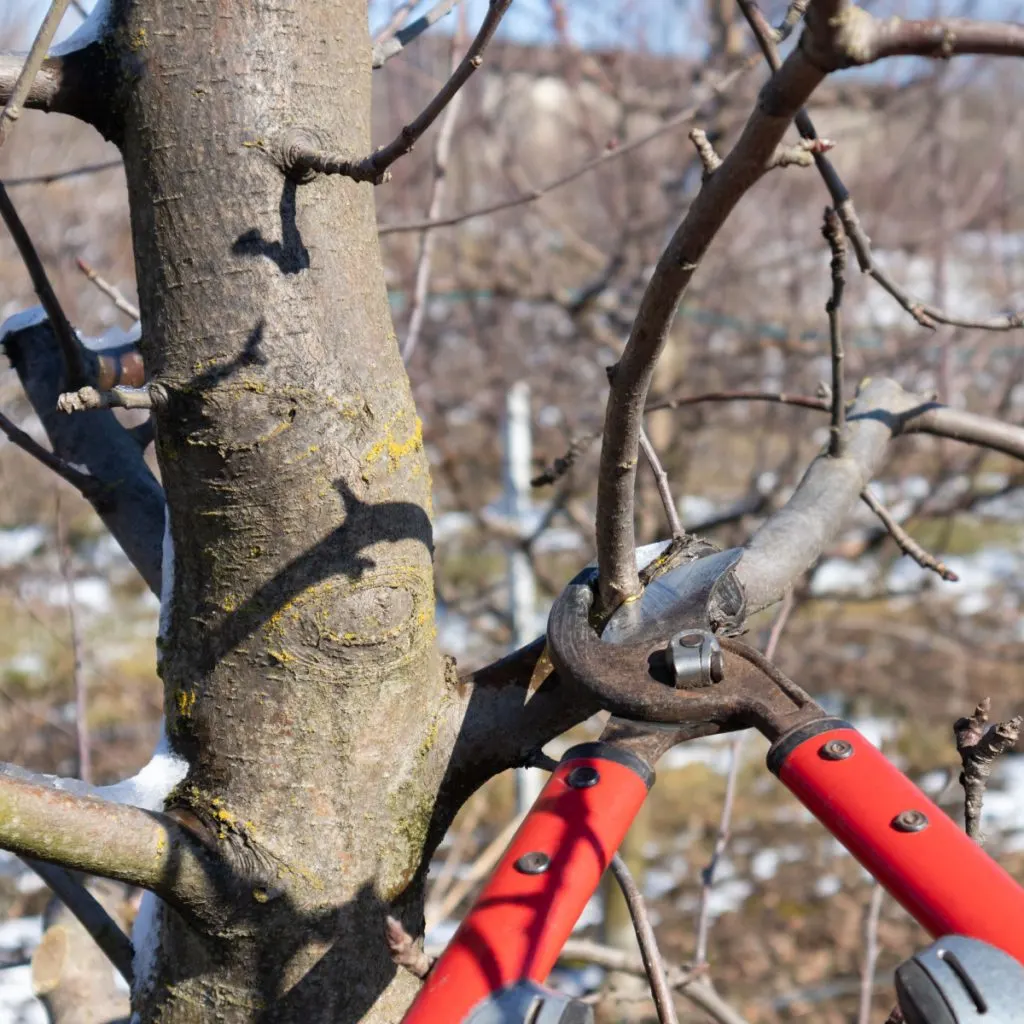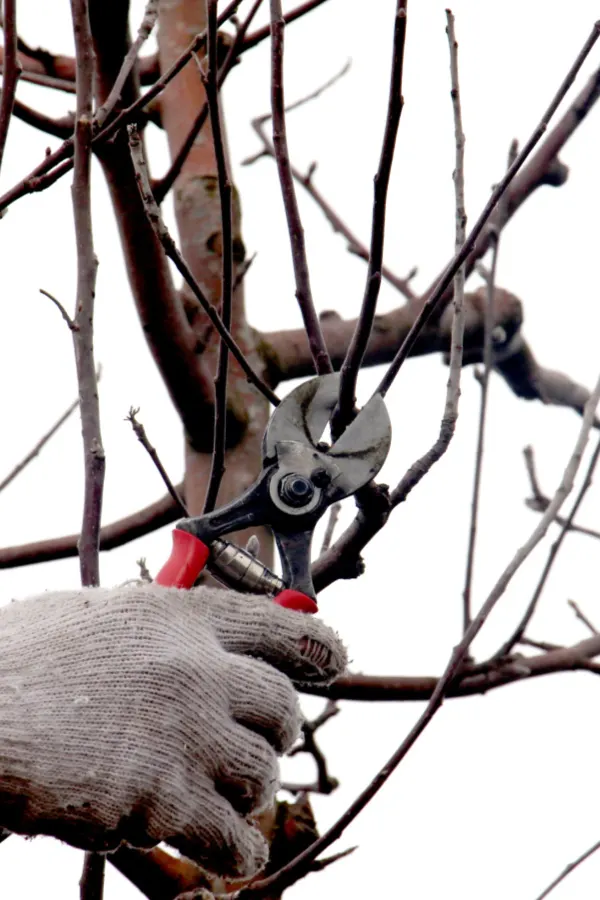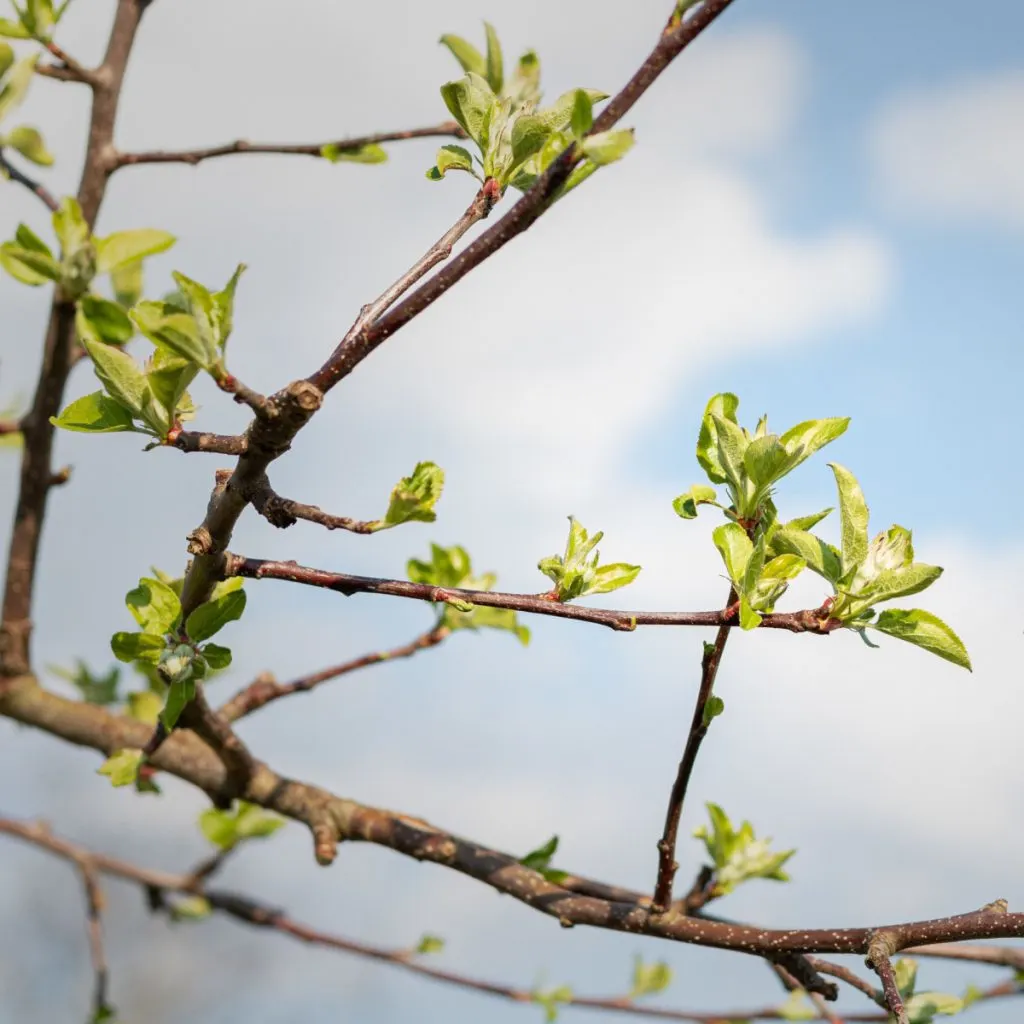One of the best ways to keep your apple trees healthy, strong and productive is to prune them on a regular basis – and believe it or not – winter time is actually the best time to do it!
Pruning is vital not just to the health and well being of your apple trees, but also to the fruit the tree produces. First and foremost, pruning helps an apple tree to keep its shape and stay manageable. After all, if a tree grows too large, it can be impossible to care for and pick its fruit.
But even more important, regular pruning increases airflow to all parts of the tree and allows for better sun absorption. And that allows for better flowering and pollinating. And best of all – that allows your tree to focus on creating bigger and better tasting apples!

Apple trees that are allowed to become overgrown can have difficulty producing good fruit. When a tree grows too thick with branches, it simply wastes too much of its energy on caring for all its limbs, stems and foliage. And that results in fewer and smaller fruits.
But here’s the good news – pruning can cure all of that. And despite what many gardeners may think, pruning does not have to be a difficult or complicated process. Especially when you consider you can do it right in the middle of winter – when there is little else to do!
How To Prune Apple Trees – And Why Winter Is The Time To Do It!
The Advantages Of Winter Pruning
Although you can trim fruit trees during the spring and summer months, winter is actually the best time to do this simple chore. Not just for the tree – but for you as well.
During the winter months, the fruit tree has dropped all of its leaves, leaving the branches exposed. With the leaves out of the way, it makes it far easier to see which branches need to be trimmed back and which to leave alone.
But the biggest advantage of all for winter pruning is for the fruit trees. Fruit trees go dormant during the winter months. Because of that, the trees are no longer creating new growth. Instead, they are conserving their energy and resources to start growing again once spring rolls around.

Since the trees are essentially “asleep”, winter pruning puts no stress on the tree at all. And once spring arrives and it wakes up, it can then send energy to the strongest, healthiest branches – instead of distributing its resources all throughout a mass of overgrown limbs and twigs.
Winter pruning is actually good for all types of fruit trees – and rose bushes as well! See our article: Pruning Rose Bushes In Winter – How To Get Your Roses To Bloom Bigger This Year!
So now that we know why winter is the time to prune – let’s take a look at how to best perform this simple chore. And it all starts with making sure you have clean, sharp pruners and saws to do the job.
What You Need To Prune – How To Prune Apple Trees
To prune properly, you will need a few types of cutting tools. For large branches a pruning saw or a small pruning handheld chainsaw work wonders. In addition, a long pair of bypass pruners and a small handheld pair will give you all you need to tackle the job.
- Affiliate Link: Mini Electric Chain Saws Cordless Handheld Portable
- Affiliate Link : Loppers Hedge Shears & Pruners Combo Set
Before you ever make that first cut, you do need to make sure the blades are clean and sharp. Dull blades can tear wood and leave it damaged. As for cleaning the blades, always disinfect them in between each tree to help avoid spreading possible disease among your trees.
Start By Removing Damaged Wood – How To Prune Apple Trees In The Winter
Always start your pruning efforts by removing any branches that are broken, damaged, diseased, or dead. Not only do these branches cause the tree to look unsightly, they can also open the tree up to disease and issues down the road.

In addition, the tree will continue to send its resources and energy to those damaged branches to try to repair them during the active growing season. Pruning and removing these branches in the winter will allow the fruit tree to send its resources only to where it really counts next spring.
Cut the branches all the way back to the trunk of the tree or to a spot where the damaged branch connects to a larger limb. This will help keep the tree looking tidier. It will also help to prevent new growth from occurring if a small nub was left behind.
Thinning – Prune Fruit Trees In The Winter
Now it’s time to thin. This is by far the biggest key to keeping your tree healthy and to have it produce bigger and better apples!
Apple trees should be pruned to maintain a central leader appearance. The tree will have an overall triangle shape. A thick main branch should come up the middle with several main slightly upright branches coming off of it.
As mentioned earlier, fruit trees need to have proper light and air circulation to stay healthy. Your goal with thinning is to open up the tree’s canopy to give it the light and air it needs.
Remove any branches that cross paths and might rub against one another. As the wind blows, this will can cause friction and damage to the branches. It will also prevent good air flow to the tree’s inner portions.

When branches are touching or crossing one another, remove those that are the healthiest and that are growing in an upward direction, concentrating on cutting out the branches that are weaker and growing laterally or downward. You also need to remove branches that are growing inwards. These branches might not be causing issues right now, but as they grow, they will.
Lastly, remove any stand alone branches that are growing downward or horizontally. These branches will often struggle and are usually the first to snap when they start to get heavy with fruit.
Removing A Portion Of Last Year’s Growth – How To Prune Apple Trees In The Winter
The last step in the pruning process is to remove some of last year’s new growth. This includes taking time to top out the tree to keep it manageable. Always aim to remove about a quarter of new growth each year. If your trees have not been pruned for awhile, it is okay to take more, but realize it will take a year or two to recover with better fruiting.
Removing some of the new growth helps to strengthen the tree and allows it to fill out properly. Most bud growth occurs on second-year branches, so removing the excess new growth will allow the resources to go to those older branches.
Here’s to pruning your apple trees this winter – and to a bigger and better harvest next summer!
Simple Garden Life
Follow Our Facebook Page For Even More Great Tips! Simple Garden Life Facebook Page
Simple Garden Life is a website dedicated to keeping gardening fun, simple and enjoyable! We publish two new articles each week along with a new garden podcast episode every two weeks. This article may contain affiliate links.
